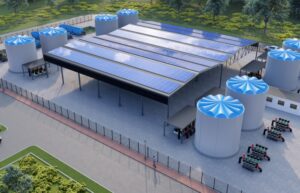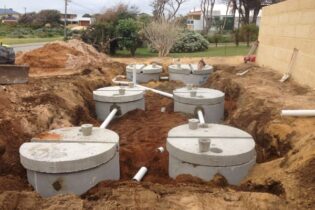For any industrial or municipal entity considering a renewable-power-driven water or wastewater treatment approach, the cost of implementation is relative. The primary concern is uninterrupted production, coupled with medium- to longer-term energy savings, says NJ Bouwer, executive at NuWater, which is pioneering the integration of solar as well as hybrid systems to run its custom-designed systems.
A technology-driven engineering leader that prides itself on innovation, NuWater designs, builds, finances, operates and maintains water and wastewater treatment plants for the South African and international market, both for public and private clients. “The emphasis is on achieving optimal efficiencies by selecting the best technology fit for our client’s process requirement, with examples including the treatment of contaminated groundwater, seawater desalination and complex industrial effluent utilising various filtration techniques,” explains Bouwer, adding that key technologies employed by NuWater include ultra-low-pressure reverse osmosis (RO), nanofiltration, ultraviolet water purification treatment and ultrafiltration. The starting point, however, is the available power source, which is always top of mind, from both a cost and availability perspective. This is especially the case in South Africa, where daily extended power outages – dubbed ‘load-shedding’ – continue to occur, setting off a chain of negative reactions. In the municipal potable water space, for example, load-shedding impacts the entire network from treatment, pumping, and conveyance to reduced reservoir capacities, often resulting in water shortages, or ‘water-shedding.’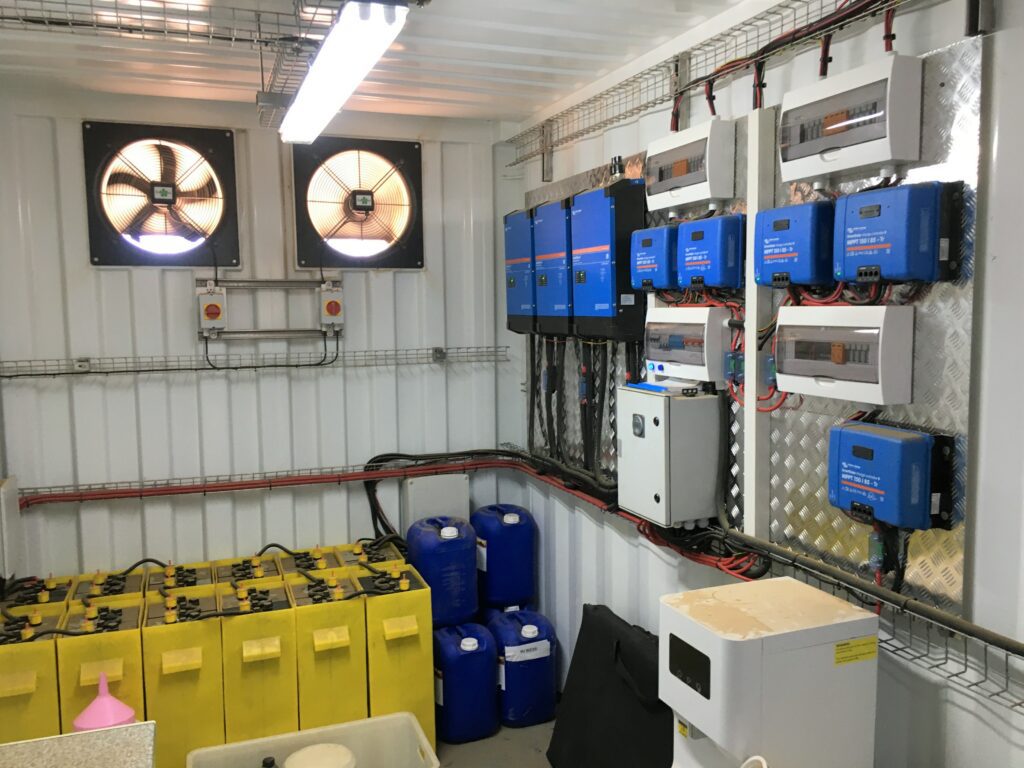
Intelligent plants that are energy efficient
“Clearly, renewable energy is an environmental imperative, plus it makes economic sense; however, in our case, it’s now an immediate socio-economic imperative as South Africa faces a potential collapse of its conventional coal-fired grid. This is having a catalytic effect, significantly accelerating the desire to adopt renewables as a power risk mitigation measure. This is spurring huge demand for NuWater’s high-efficiency, intelligent-energy-powered plant solutions,” Bouwer continues. Another driving factor is the historically high cost of energy in South Africa with Eskom, the country’s national power utility, recently announcing further major tariff hikes for 2023. This is another pressing motivation to find off-grid alternatives. Depending on the scale and feedwater qualities, water and wastewater treatment can be somewhat energy intensive if the correct pairing of technologies is not selected. For desalination for example, the cost of running purely on grid power can be 60-70% of the plant’s overall operational expenditure. “That’s a big incentive for considering a switch to ‘free’ off-grid renewable energy or looking at a hybrid system. The latter might combine conventional power, renewables and backups like diesel or gas turbine gensets. It all depends on the baseload requirements,” says Bouwer.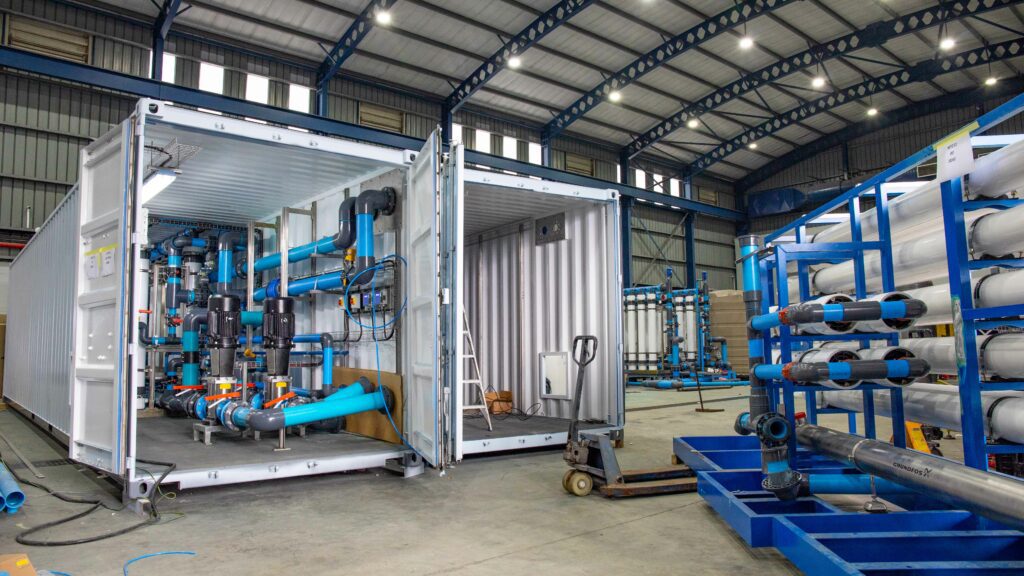
A question of solar space
If space limitations are not an issue, then huge solar arrays can be established. Classic examples can be found in the Middle East, where extensive solar fields power the world’s largest desalination plants, supporting the development of flourishing metropolises by harnessing two natural resources – sunlight and seawater. Other key ingredients are enabling government policies, and the right geographic location. To date, NuWater has installed and commissioned solar-powered package plants in South Africa and Africa. These have typically been in the range of 50 000-150 000 ℓ/day, operating at a power consumption of 0.2-1.2 KWh/m3. The amount of energy required depends on the degree of water or wastewater contamination. Among the cases in point are four standalone solar-powered water purification plants that NuWater has designed, installed and commissioned in Pemba, Mozambique, to serve remote rural villages. The treatment strategy here is particularly intensive, entailing the removal of silica, organics and high levels of salinity from in-situ groundwater to produce clean, safe potable water.Filling infrastructure gaps
For communities in need, NuWater’s solar-powered modular plants are certainly a game changer and could help bridge the divide for a wide range of stakeholders affected by load-shedding, inadequate or no existing services.“Let’s take the example of a rural school accommodating 1 000 learners, with each pupil requiring around 5 ℓ/day. By installing a solar-powered package plant, and dependent on the feedwater source, you’d only need around 0.5 kWh/m3 to treat some 5 000 ℓ/day of potable water. To achieve this, the plant would need up to eight 400 W solar panels,” Bouwer explains.
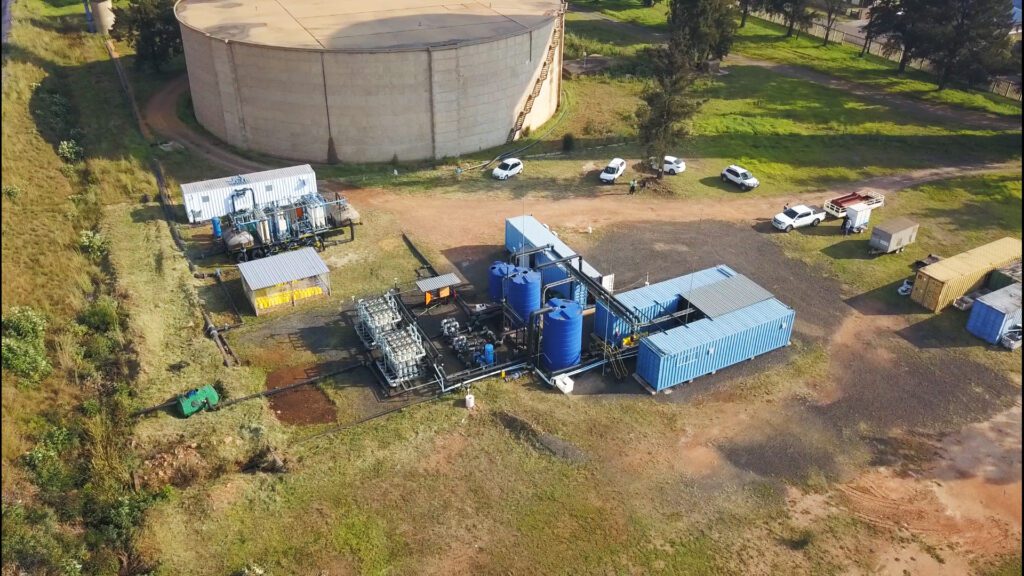
Industrial scalability
Another parallel development is the growth in demand from industrial clients, some of whom are installing their own large-scale rooftop and allied solar power generation systems to run critical processes off the grid. In a recent example, NuWater has secured a contract to treat some 500 000 ℓ/day of water, sourced from an on-site borehole, for an FMCG manufacturer. In this instance, NuWater also treats the downstream industrial effluent. “Advancements in battery technology will continue to extend the boundaries of energy storage capabilities, which includes industry research and development on electrolyte batteries. The cost of solar panels, battery storage and inverters also keeps falling, making it more and more attractive to go the self-generation route. There are also opportunities to dovetail systems with other options like waste-to-energy,” says Bouwer.Tailored process solutions for municipalities
Within its broad portfolio of solutions, NuWater is currently providing specialist services for municipalities across South Africa. Examples include eMalahleni Local Municipality (Witbank) in Mpumalanga, George Municipality in the Western Cape, and Ndlambe Municipality (Port Alfred) in the Eastern Cape. In the case of eMalahleni, the municipality’s existing water treatment works was not set up to remove mining-related contaminants. In response, NuWater has installed a modular plant on-site to meet this specificprocess requirement. Meanwhile in George, the municipality has taken its main system offline in order to maintain and upgrade the existing treatment works. During this period, NuWater’s plants are responsible for augmenting the town’s potable water supply.
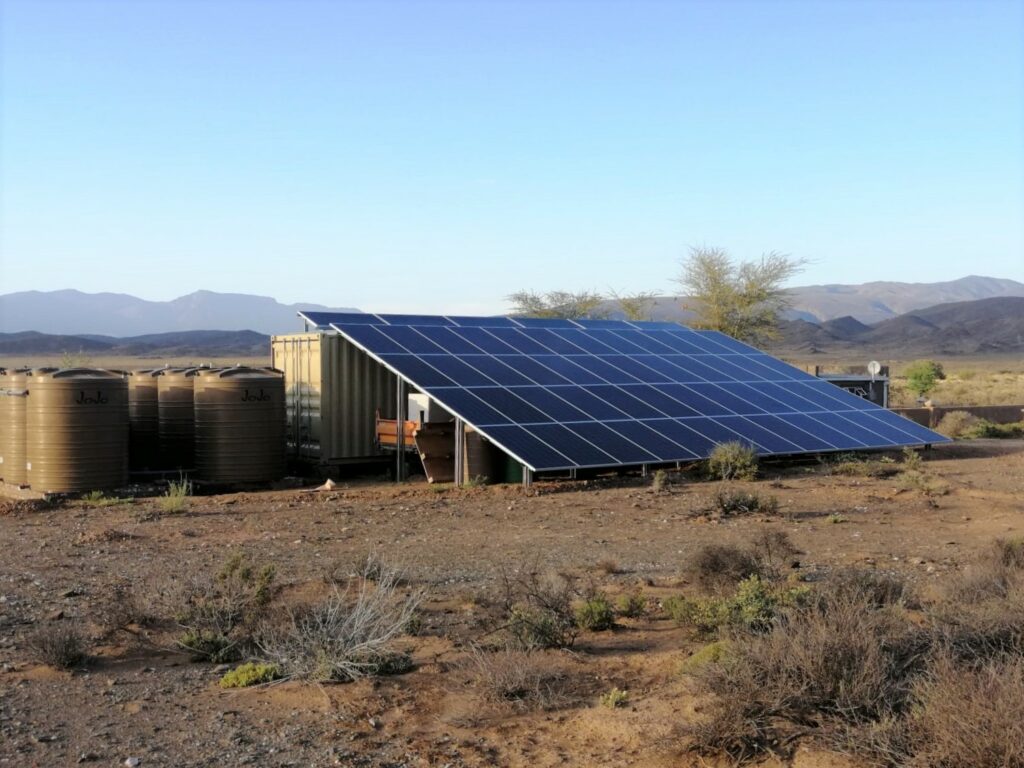
Port Alfred
NuWater’s scope of works in Port Alfred is complex and underscores its turnkey capabilities. This seaside tourism destination has been subjected to crippling droughts in recent years. The only viable optionwas desalination. “We’ve installed what we believe are the highest efficiency RO systems that are commercially available and affordable to end-users,” says Bouwer. NuWater’s solution incorporates specialised booster sets incorporating energy recovery systems. Low-energy membranes further reduce power demand. “The plant’s setup has also been purpose-designed so it is ultra-efficient on the cleaning cycle, ensuring that energy consumption is as low as possible,” Bouwer continues. For Port Alfred, solar power was ruled out as an option due to the location of NuWater’s plants in shady ravines where the available sunlight was considered insufficient for the plant’s baseload requirements.
Some renewable possibilities
For mining, industrial and municipal clients, there are ‘out of the box’ water treatment options to consider if South Africa enters Stage 8 in the winter months. Stage 8 or removing 8 000 MW from the grid would result in some 12 hours of load-shedding in a 24-hour period, especially devastating for end-users. One scenario would be to use solar power (at scale and space permitting) combined with battery storage to process the bulk of the daily potable water requirement within a 10- to 12-hour window and then store it for 24-hour use in reservoirs or tanks. The only power then needed during load-shedding, or at night, would be booster pumps for water distribution, which could be run via gensets or batteries. “For municipalities, the massive volumes of water that would need to be stored and then pumped at a steady rate could prove to be challenging, but the concept is workable in theory,” adds Bouwer. “One thing is certain. Climate change threats, spiralling conventional power costs, and load-shedding all make renewable energy very attractive. It’s a win-win for the environment, and vital for our future water security,”Bouwer concludes.


